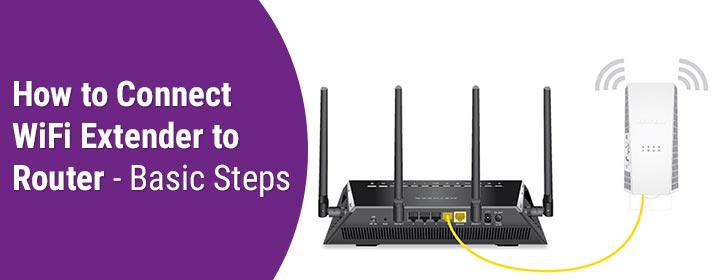To extend the existing network coverage in your home, using a WiFi extender is the best option. The WiFi extender takes in the signal from the router or the DSL gateway and repeats the signals further. This widens the network coverage drastically. Since the router or the DSL gateway provides the input signal to the extender, you should get both these devices connected first.
This blog post will help you learn how to connect WiFi extender to router in easy steps. We have taken the Netgear extender as a reference here. You can easily execute the Netgear WiFi extender setup by connecting the devices.
How to Connect WiFi Extender to Router?
You can connect the Netgear WiFi range extender to the host router using the WPS button or without WPS. This section comprises all the ways that can be used to get the devices connected. You can choose any of these methods as per your convenience, set up your extender and get rid of WiFi dead spots.
Connect WiFi Extender to Router With WPS
WPS is WiFi protected setup wherein you do not require MyNetgear login details to get the devices connected. This is considered the easiest setup method. The steps are as follows:
- The Netgear WiFi extender is to be placed closer to the host router so that they can communicate well.
- Power on the router first and then the WiFi extender.
- Ensure plugging them into the wall outlets that are in well working condition. Both devices must receive a consistent electricity connection.
- Press the WPS button on the router.
- Within two minutes, press the WPS button on the Netgear WiFi extender.
- Repeat the same process if your router supports both 2.4 GHz and 5 GHz wireless bands.
This completes connecting the WiFi extender and router with the WPS button.
Connecting WiFi Extender to Router Without WPS
To connect your Netgear extender to the host router without WPS, you have two options that you can choose: with an Ethernet cable and without an Ethernet cable.
In the WPS method, you do not have to make any physical connection between the router and extender. However, in this method, you need to connect the devices physically.
How to Connect WiFi Extender to Router with Ethernet cable?
You can connect a WiFi extender to the router with an Ethernet cable. We recommend you use a good quality CAT6 LAN cable.
Grab the cable and insert its ends into the Internet port and the LAN port of the WiFi extender and router respectively. Be certain that you are making a secure connection by inserting the cable correctly into the ports. No loose connections are allowed.
Connect WiFi Extender to Router without Ethernet Cable
If you wish to connect the device without an Ethernet cable, then simply place the devices close to each other. They will get connected wirelessly during the setup process.
WiFi Extender and Router Connected! What’s Next?
Once you have connected the Netgear WiFi extender to the router with or without Ethernet cable, you should follow the setup steps on the Nightawk app or use the web interface on a computer.
To use the web interface access the Netgear extender setup page on a computer via 192.168.1.250 or mywifiext.local. Follow the instructions appearing on the screen and you will complete the Netgear extender setup.
In case you are using the app, install the app on your phone, log in to it using the login details and complete setup.
Summing Things Up
This blog post covers how to connect WiFi extender to router with WPS and without WPS. You have also gained information on how to connect the Netgear wireless range extender to the host router using an Ethernet cable.
After you have completed the Netgear WiFi extender setup by connecting the WiFi extender to the router, you can place the extender at a location where you wish to extend WiFi signals. We recommend trying different locations and then deciding on one where you get the best possible WiFi connection.
We would like to recommend you update the firmware on your extender to enhance its performance. You need to log in to the extender using mywifiext.local or IP address and update the firmware with the most recent version.


